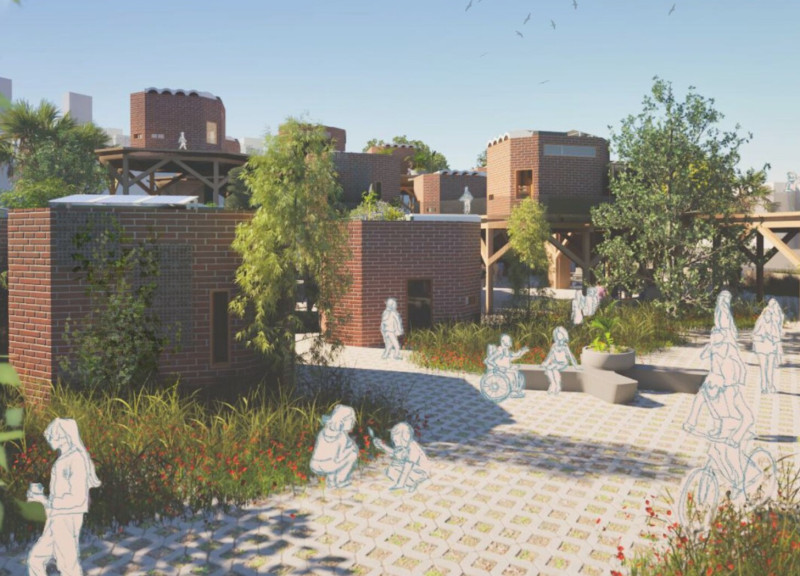5 key facts about this project
At its core, this architectural endeavor represents a commitment to sustainable living and community engagement. The building is designed to be multifunctional, providing spaces for both professional activities and social interactions. This duality enhances its role within the community, creating opportunities for networking, collaboration, and cultural exchange. The layout encourages interaction among users, facilitating a sense of belonging and connection that is often missing in modern architectural designs.
Key elements of the project include the thoughtful selection of materials, which play a crucial role in both the aesthetic and functional aspects of the design. The primary materials used throughout the structure include exposed steel, sustainably sourced timber, and high-performance glass. The use of steel not only provides structural integrity but also contributes to the modern aesthetic of the building. Sustainably sourced timber adds warmth and texture, fostering a natural ambiance that resonates with users. High-performance glass enhances energy efficiency while allowing natural light to permeate the interiors, creating a welcoming and vibrant atmosphere.
The architectural design employs an open-plan layout that maximizes usability and flexibility. This approach allows spaces to be adapted for various purposes, accommodating everything from formal meetings to casual gatherings. The design also cleverly integrates outdoor spaces, including terraces and green roofs, promoting biophilic design principles that connect occupants with nature. These outdoor areas provide essential breaks from indoor environments, enhancing well-being and productivity.
Details such as large overhangs and strategically placed windows were carefully considered to optimize sunlight exposure throughout the year while minimizing heat gain during warmer months. This thoughtful approach to passive solar design reflects a commitment to environmental stewardship, reducing the building's overall carbon footprint. The incorporation of renewable energy sources, such as solar panels and rainwater harvesting systems, further solidifies the project’s sustainability goals.
Unique design approaches are evident in the integration of local cultural elements. The project draws on local architectural vernacular, incorporating materials and forms that resonate with the region's historical context. This connection not only honors local traditions but also provides a sense of place that enhances the overall user experience. The architectural details, such as decorative patterns derived from regional crafts, add a layer of complexity and richness to the structure, inviting exploration and interaction.
Overall, this architectural design project stands as a testament to the potential of architecture to enrich lives while fostering sustainability and community spirit. Its careful attention to materiality, functionality, and cultural relevance sets a precedent for future developments. Readers are encouraged to explore the architectural plans, sections, designs, and ideas presented in the project to gain a deeper understanding of its nuances and the thought-provoking design choices that define it. By engaging with these elements, one can appreciate the careful craftsmanship and ideology that have shaped this contemporary architectural endeavor.


























